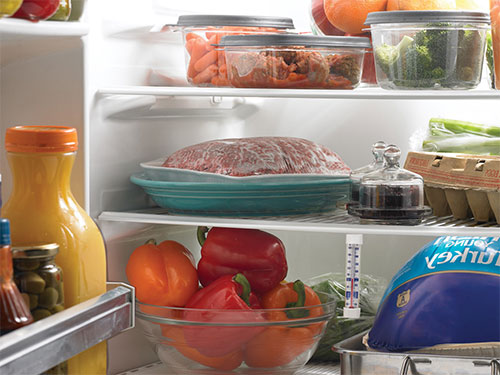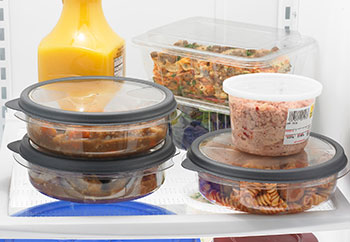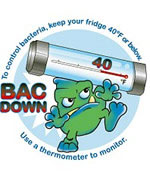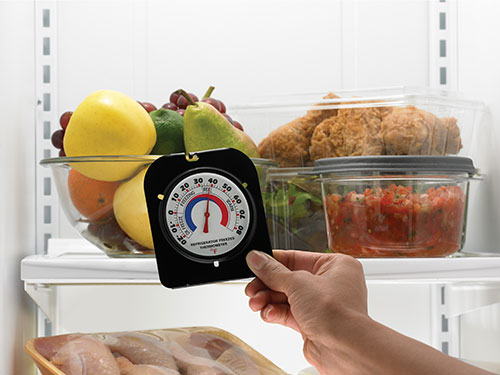
Bulletin E340
Foods that require refrigerator or freezer storage will taste and look better if you use them within the recommended storage time.
Quality vs. Safety
Good quality food tastes, smells and looks fresh. A safe food will not make you sick. Sometimes food contains microbes that can make people ill. These include bacteria, viruses, molds and parasites. Unfortunately, how a food looks is not always an indicator of safety. An unsafe food may look and smell fine but contain microbes that cause illness. For example, a huge pot of hot chili in the refrigerator will not cool quickly and may support bacterial growth that could make someone sick. However, chicken with freezer burn is safe, yet poor quality. The goal of proper food storage is to provide both safe and high quality foods. A food's quality depends on the condition of the raw food and how the food is made and stored.
Start with Good Quality

Keep it Cold
Refrigerator

Freezer
Keep It Clean
Since bacteria can get into food during handling, keep everything—hands, countertops, dishes, utensils, and the refrigerator and freezer—clean. Wash your hands with soap and warm water for at least 20 seconds before putting away groceries, preparing food, or putting away leftovers. This will greatly reduce the risk of spreading bacteria and viruses and getting sick.
How Long Does Food Keep?
Download the easy to use Foodkeeper App for Food Storage Guidelines from USDA or go to Foodsafety.gov for storage charts.
Foods That Do Not Freeze Well
Because flavor changes:
Garlic (raw)
Onion (raw), better cooked or as an ingredient
Salt substitutes (table salt-sodium chloride-is OK)
Spices—clove, sage (flavor is stronger or bitter)
Vanilla, artificial flavor (not real vanilla)
Because texture changes:
Cake icing—soft or boiled (butter cream freezes well)
Cream sauces
Custard or cream filling
Egg whites—cooked & meringue
Fried foods (homemade)
Gelatin
Mayonnaise or salad dressing
Lettuce
Pasta (cooked, un-sauced)
Potatoes
For More Information
April 2020
Copyright © 2024 Rutgers, The State University of New Jersey. All rights reserved.
For more information: njaes.rutgers.edu.
Cooperating Agencies: Rutgers, The State University of New Jersey, U.S. Department of Agriculture, and Boards of County Commissioners. Rutgers Cooperative Extension, a unit of the Rutgers New Jersey Agricultural Experiment Station, is an equal opportunity program provider and employer.



